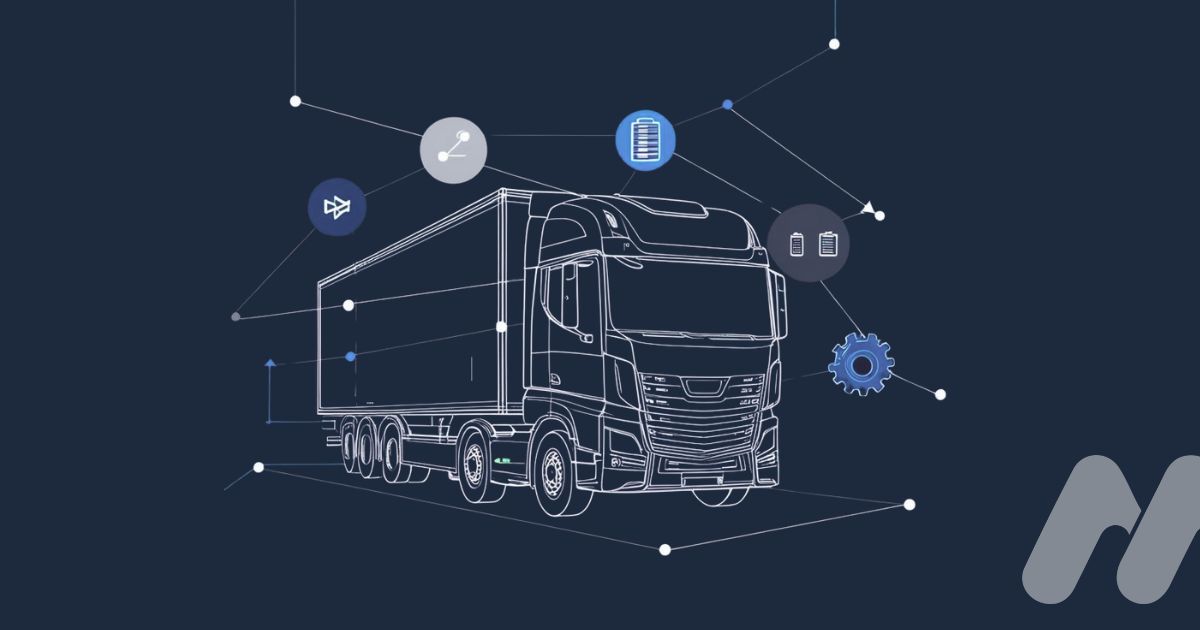Why choosing technology is not the first step towards emission-free transport

We do not sell the drive. We sell the solution.
This sentence is not a slogan. It’s a mindset that changes the way companies look at zero-emission transport. And often what they initially thought they were looking for.
When we are approached by a company that wants a “hydrogen vehicle”, we never start with the technical specifications. We start with questions. How many kilometres do you drive a day? What are your routes, stops, infrastructure, duty cycles? Do you need fast refueling, long range, or both?
The choice of technology is not the first step towards emission-free transport. It is only the result of understanding the needs. Both hydrogen and electric propulsion are just tools. They are only suitable when they fit into the whole system. In your reality.
Companies often succumb to the impression that “zero-emission” starts with the choice of battery or fuel cell. But if you choose a technology without knowing your operation, you may end up with a vehicle that, while meeting all the standards, doesn’t realistically work for you. Either it’s expensive to run or it can’t handle the daily load.
This is why at MIP we take a systems approach. System integration means that the drive is just one piece of the puzzle. The solution only emerges when all the parts – from logistics to infrastructure to safety requirements – come together to form a functional whole.
Wondering what the transition to zero-emission transport means in practice? We’ve summed it up clearly and practically in this article.
Zero-emission transport is not universal. What works in public transport may not work in long-distance logistics. And what makes sense for a truck-trailer may not make sense for a municipal vehicle. Each project requires its own analysis, its own design and its own solution.
If you are interested in how such a solution looks in real deployment, we recommend the article How hydrogen technology is changing freight transport, where we explain its advantages and limitations.
If companies want change, they shouldn’t ask: “What type of vehicle should I buy?”
A better question is: “How can we reduce emissions without losing performance, flexibility and reliability?”
One technology does not offer the answer. But the system that integrates that technology.
Therefore, the choice of technology is not the first step. The first step is to understand how you operate today – so you know what you need tomorrow.
If you’re still on the fence about which propulsion is best for you, we recommend you read our top 10 benefits of hydrogen propulsion for logistics, where we show you who really benefits from hydrogen.
If you want a solution that is not one-size-fits-all, but tailored to you, we are here. So that you don’t have to guess what’s right. But to know.
This sentence is not a slogan. It’s a mindset that changes the way companies look at zero-emission transport. And often what they initially thought they were looking for.
When we are approached by a company that wants a “hydrogen vehicle”, we never start with the technical specifications. We start with questions. How many kilometres do you drive a day? What are your routes, stops, infrastructure, duty cycles? Do you need fast refueling, long range, or both?
The choice of technology is not the first step towards emission-free transport. It is only the result of understanding the needs. Both hydrogen and electric propulsion are just tools. They are only suitable when they fit into the whole system. In your reality.
Companies often succumb to the impression that “zero-emission” starts with the choice of battery or fuel cell. But if you choose a technology without knowing your operation, you may end up with a vehicle that, while meeting all the standards, doesn’t realistically work for you. Either it’s expensive to run or it can’t handle the daily load.
This is why at MIP we take a systems approach. System integration means that the drive is just one piece of the puzzle. The solution only emerges when all the parts – from logistics to infrastructure to safety requirements – come together to form a functional whole.
Wondering what the transition to zero-emission transport means in practice? We’ve summed it up clearly and practically in this article.
Zero-emission transport is not universal. What works in public transport may not work in long-distance logistics. And what makes sense for a truck-trailer may not make sense for a municipal vehicle. Each project requires its own analysis, its own design and its own solution.
If you are interested in how such a solution looks in real deployment, we recommend the article How hydrogen technology is changing freight transport, where we explain its advantages and limitations.
If companies want change, they shouldn’t ask: “What type of vehicle should I buy?”
A better question is: “How can we reduce emissions without losing performance, flexibility and reliability?”
One technology does not offer the answer. But the system that integrates that technology.
Therefore, the choice of technology is not the first step. The first step is to understand how you operate today – so you know what you need tomorrow.
If you’re still on the fence about which propulsion is best for you, we recommend you read our top 10 benefits of hydrogen propulsion for logistics, where we show you who really benefits from hydrogen.
If you want a solution that is not one-size-fits-all, but tailored to you, we are here. So that you don’t have to guess what’s right. But to know.